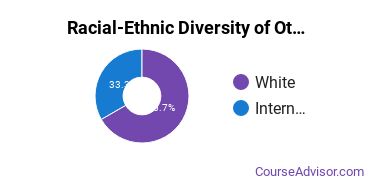Other Library & Archives Assisting at Pratt Institute - Main
If you are interested in studying other library science, you may want to check out the program at Pratt Institute - Main. The following information will help you decide if it is a good fit for you.Pratt Institute is located in Brooklyn, New York and has a total student population of 4,353.
Want to know more about the career opportunities in this field? Check out the Careers in Other Library & Archives Assisting section at the bottom of this page.
Featured schools near , edit
Pratt Institute Other Library & Archives Assisting Degrees Available
- Master’s Degree in Other Library Science
Pratt Institute Other Library & Archives Assisting Rankings
Note: While rankings may be a good starting point when you're researching a school, they don't necessarily highlight all of a school's strengths. Don't forget to check out the other details that are available for a school to see if it has what you're looking for in a program.
Other Library Science Student Demographics at Pratt Institute
Take a look at the following statistics related to the make-up of the other library science majors at Pratt Institute - Main.
Pratt Institute Other Library & Archives Assisting Master’s Program

Of the students who received a other library science master's degree from Pratt Institute, 67% were white. This is below average for this degree on the natiowide level.
The following table and chart show the race/ethnicity for students who recently graduated from Pratt Institute - Main with a master's in other library science.

| Race/Ethnicity | Number of Students |
|---|---|
| Asian | 0 |
| Black or African American | 0 |
| Hispanic or Latino | 0 |
| White | 4 |
| International Students | 2 |
| Other Races/Ethnicities | 0 |
Related Majors
References
*The racial-ethnic minorities count is calculated by taking the total number of students and subtracting white students, international students, and students whose race/ethnicity was unknown. This number is then divided by the total number of students at the school to obtain the racial-ethnic minorities percentage.
- College Factual
- National Center for Education Statistics
- O*NET Online
- Image Credit: By Jim.henderson under License
More about our data sources and methodologies.
Featured Schools
 Request Info
Request Info
|
Southern New Hampshire University You have goals. Southern New Hampshire University can help you get there. Whether you need a bachelor's degree to get into a career or want a master's degree to move up in your current career, SNHU has an online program for you. Find your degree from over 200 online programs. Learn More > |
